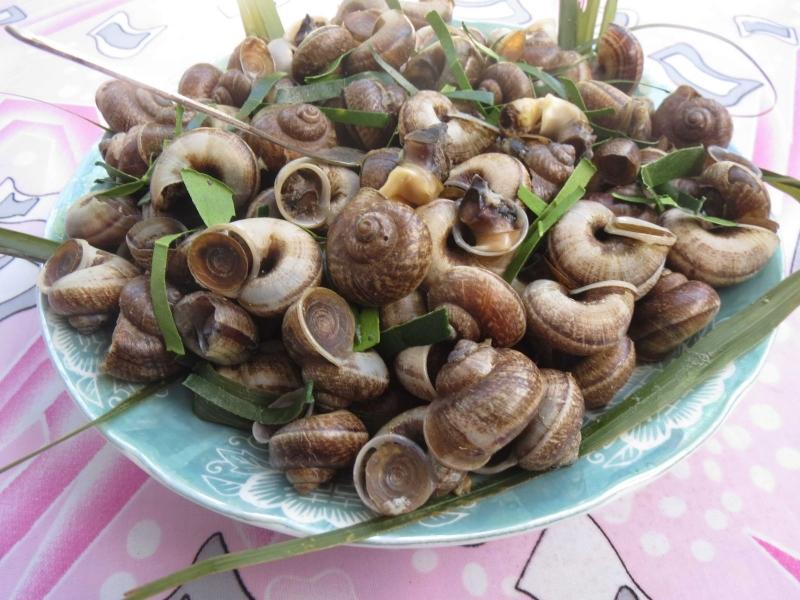Mountain snail is a dish that is not strange to Vietnamese people, but it has to be the mountain somewhere to feel the delicious taste of the mountain snail there. Every rainy season from April to August this species of mountain snail crawls out to feed and reproduce, they usually live in the limestone mountains of Tam Diep, Yen Mo, Nho Quan. Mountain snail meat is tough, crispy, sweet, fragrant with traditional medicine. Mountain snails can be processed into many dishes such as grilled, fried with tamarind, steamed with ginger, boiled and drained, mixed with onion salad… all very attractive. A plate of mountain snails costs from 30,000-50,000 VND.
Ninh Binh mountain snail is a famous dish made from the intestines of mountain snails, which is a simple dish dipped with spiced fish sauce that will create a strangely delicious feeling. Coming to Ninh Binh is not difficult to find and buy some mountain snails to try. You can go to markets in Tam Diep town, Yen Mo. Snails here are sold a lot, but one note is that you can only find them after the showers. If you want to enjoy right from Ninh Binh’s kitchens, you can go to any restaurant here to order mountain snails… You remember the name so you can order when you visit this place.

Source: Collected internet.
The North and North Central regions have a humid subtropical climate with 4 seasons: Spring, Summer, Autumn, and Winter. The Central and South Central regions have a tropical monsoon climate, the extreme South Central and Southern regions have tropical savanna characteristics. At the same time, it is directly influenced by the trade monsoon climate, which often blows in low latitudes. The South often has a tropical savanna climate, hot and humid with two seasons: dry season and rainy season (from April-May to October-November). Every year, the cold and humid winter typical of the North contrasts with the warm atmosphere of Tet and spring in the South.
Vietnam, whose national name is the Socialist Republic of Vietnam, is a socialist country located at the eastern tip of the Indochina peninsula in Southeast Asia, bordering Laos, Cambodia, China, and the sea. East and Gulf of Thailand. The territory of Vietnam has been inhabited since the Paleolithic era, starting with the states of Van Lang and Au Lac. Au Lac was annexed by the Trieu Dynasty in the North in the early 2nd century BC, followed by a period of Northern domination lasting more than a millennium. The independent monarchy was re-established after Ngo Quyen's victory over the Southern Han dynasty. This event paved the way for independent dynasties to succeed and then repeatedly win against wars of invasion from the North as well as gradually expanding to the south. The final period of Northern domination ended after the Lam Son insurgent army's victory over the Ming Dynasty.
Vietnam's history began from 1 to 2 thousand years BC. Over many centuries with the Ly, Tran, Le, and Nguyen dynasties, from the mid-19th century, Vietnam became a French colony. After the August Revolution, the Democratic Republic of Vietnam was born. The Battle of Dien Bien Phu in 1954 marked the end of the French in the territory, but Vietnam was divided into two countries: the Democratic Republic of Vietnam in the North and the Republic of Vietnam in the South. After the events of April 30, 1975, Vietnam was unified and from July 2, 1976, officially named the Socialist Republic of Vietnam.
Located on the banks of Ka Long, the border river between Vietnam and China, Xa Tac Temple, Mong Cai City, Quang Ninh Province, is not only a place to worship and practice folk cultural beliefs of residents. This place also has significance as a cultural milestone, affirming the sacred sovereignty of the Fatherland. Recently, this hundreds of years old historical and cultural relic was recognized by the Ministry of Culture, Sports and Tourism as a National relic because of its unique values....